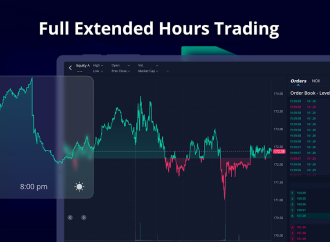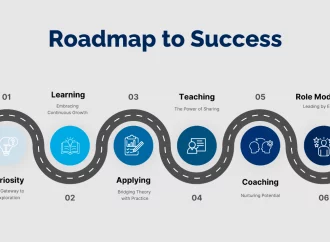Are you a freelancer looking to make your mark in the digital marketplace? With the rise of the gig economy, there has never been a better time to be a freelancer. But with so many opportunities and competition out there, it can be challenging to navigate this ever-changing landscape successfully. In this blog post, we’ll
Are you a freelancer looking to make your mark in the digital marketplace? With the rise of the gig economy, there has never been a better time to be a freelancer. But with so many opportunities and competition out there, it can be challenging to navigate this ever-changing landscape successfully. In this blog post, we’ll share tips on how to succeed as a freelancer in the gig economy and help you stand out from the crowd. So buckle up and get ready for some valuable insights that will take your freelancing career to new heights!
What is the Gig Economy?
In recent years, there has been a dramatic shift in the workforce. A growing number of people are leaving traditional 9-5 jobs in favor of freelance work. This is part of what is known as the gig economy.
The gig economy is a labor market characterized by the prevalence of short-term contracts or freelance work as opposed to permanent jobs. Gig economy workers are often hired on an as-needed basis, which can make it difficult to predict income or plan for long-term financial stability.
Despite the challenges, the gig economy offers many opportunities for those who are willing to adapt and hustle. With a little creativity and perseverance, freelancers can succeed in this ever-changing marketplace.
If you’re thinking about becoming a freelancer, here are a few things you should keep in mind:
1. Know your worth. When you’re starting out, it’s easy to undervalue your services. Don’t be afraid to charge what you’re worth – otherwise you’ll quickly find yourself working long hours for very little pay. Remember that your time is valuable, and clients will be more likely to respect you if you respect yourself first.
2. Stay organized and efficient. As a freelancer, you’ll need to wear many hats – from project manager to salesperson to accountant. Staying organized will help you stay on top of deadlines and deliver high-quality work that meets client expectations.
3 . Promote your work . Getting
The Pros and Cons of Freelancing
There are a lot of things to consider before becoming a freelancer. The pros and cons of freelancing can help you decide if it’s the right career move for you.
PROS:
The best part of freelancing is that you are your own boss. You get to set your own hours and work from anywhere in the world. This can be a great way to achieve work-life balance. And, since you’re not tied to one company, you have the freedom to pick and choose the projects that interest you most.
Another plus is that you have the potential to earn more money as a freelancer than you would working a traditional 9-to-5 job. When you first start out, your earnings may be lower than what you’d make in a corporate setting. But, as you build your portfolio and client base, you can charge premium rates for your services.
CONS:
Of course, there are some downsides to freelancing as well. One is that it can be difficult to find consistent work. As a freelancer, you are always bidding on new projects and competing with other professionals for jobs. This can be stressful and make it hard to predict when or how much work will come in.
Another downside is that freelancers don’t receive the same benefits as employees at traditional companies do. This includes health insurance, retirement savings plans, and paid vacation days.
How to Succeed as a Freelancer
As a freelancer, it’s important to be able to market yourself and your skillset in order to find work. A great way to do this is by having an up-to-date and well-written resume or CV that outlines your experience and highlights your key skills.
It’s also important to be proactive in your job search and to network with other professionals in your field. Utilize online job boards, social media, and professional networking sites like LinkedIn to find job postings and connect with potential employers.
When pitching your services, be sure to emphasize why you’re the best person for the job and what you can do for the company or individual. Be clear about your rates and what is included in your services. And always follow up after a meeting or phone call with a thank you note or email.
By following these tips, you’ll be on your way to becoming a successful freelancer in the gig economy!
What to Look for in a Client
When you’re a freelancer, your clients are your bread and butter. You need to be able to rely on them to provide you with consistent work so that you can make a living. But how can you tell if a potential client is going to be a good fit for you? Here are some things to look for:
1. A clear job description. The client should have a clear idea of what they want from you, and they should be able to communicate it in a way that you understand. If they’re vague or unclear about what they want, it’s likely that the project will be more trouble than it’s worth.
2. A budget that matches your rates. It’s important that the client is willing to pay what you’re worth. If they’re trying to lowball you, it’s likely because they don’t value your work. Move on to someone who does.
3. A history of positive reviews. Check out the client’s reviews on sites like Upwork or Freelancer.com. If they have mostly positive feedback, that’s a good sign that they’re easy to work with and fair in their payments. Avoid clients with lots of negative feedback – they’re not worth your time.
4. Clear communication channels. Make sure that the client is using a communication method that works for you (e-mail, Skype, etc.) and that they’re responding quickly to messages. If there are already communication problems before you start
How to Get Started as a Freelancer
There are a few key things you need to do to get started as a freelancer in the gig economy. First, you need to identify your niche and build up a portfolio that showcases your skills in that area. Once you have a strong portfolio, you can start bidding on projects and work your way up the ladder. You also need to be very proactive in networking and building relationships with clients and other professionals in your field. And finally, you need to always be learning and keeping up with the latest trends so that you can offer your clients the best possible service.
Conclusion
Navigating the digital marketplace can be a daunting task for freelancers in the gig economy. But with some patience and knowledge, you can make your way through this ever-changing landscape and find success as a freelancer. Knowing where to look for gigs, having an understanding of different payment systems, and staying up to date on best practices will help ensure that you have all the tools necessary to build your freelance business into something successful. With dedication and perseverance, there is nothing that cannot be achieved by entrepreneurs in today’s digital world.





















Leave a Comment
Your email address will not be published. Required fields are marked with *